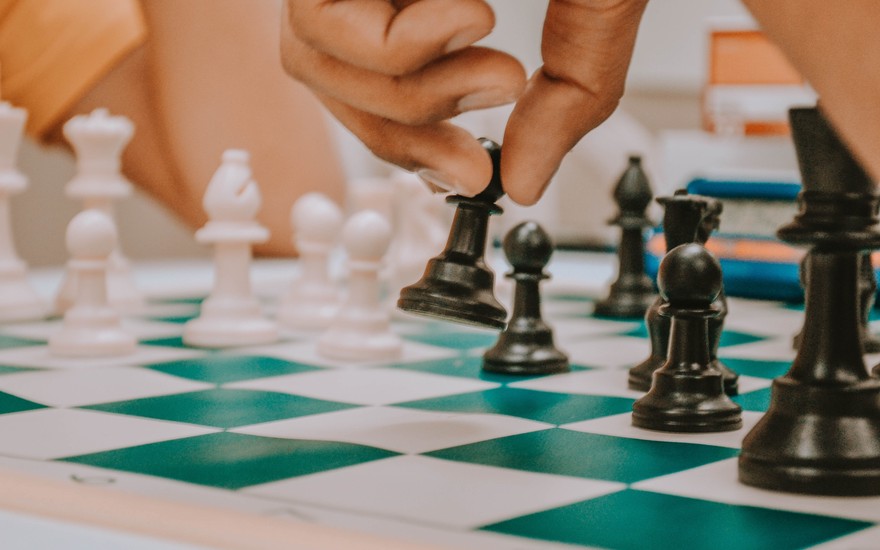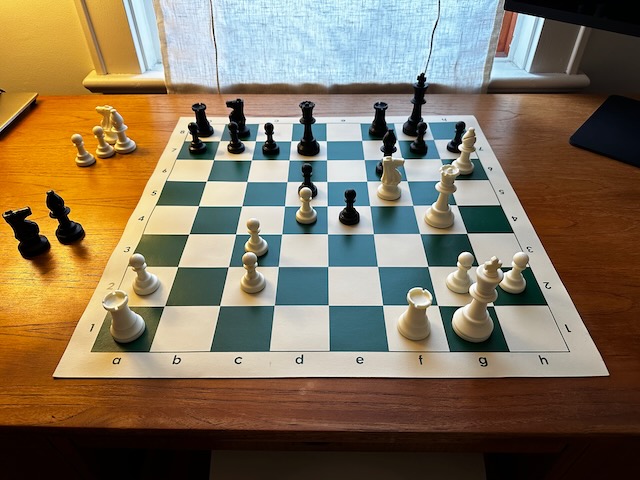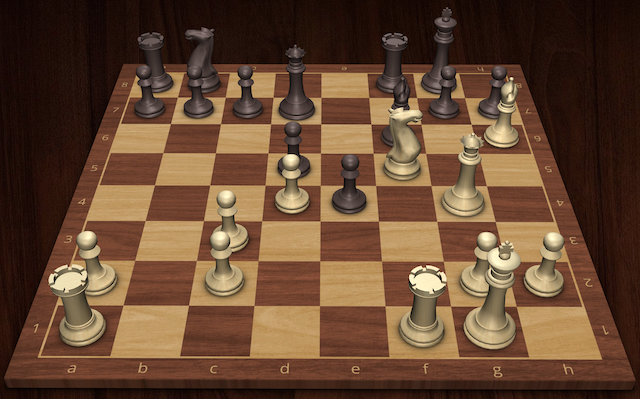
Photo by Wander Fleur on Unsplash
Transitioning to OTB Play
Some tips on transferring your online skills to OTB playMany of us who started playing chess during the pandemic chess boom have developed our chess skills using two-dimensional online boards.
 Lichess chessboard
Lichess chessboard
The top-down view of the board really helps you see how everything connects together. It can be a challenge, however, to move from online to playing on a real board, like I did this autumn at my local club. You lose your board vision and there are other things going on that you need to deal with, like hitting the clock and writing down your moves. By my last tournament, I was feeling even more comfortable at the board than I do online. Here are a few of the things I did that helped.
 Tournament chessboard
Tournament chessboard
Take your time
The first tip is to take your time. The only goal I set myself when I first starting playing OTB was to get used to the environment. Your opponent is sitting right there, so you have to control your reactions in a way that you don't online. There is etiquette you have to respect, like the touch-move rule and not talking. You have to remember to hit the clock after your move. For longer time controls, you have to remember to write down both your own and your opponent's moves. It takes time for these things to feel natural.
One thing that helps is that I let my opponents know that I am new to OTB play. I usually do this when I make my first error, like forgetting to hit my clock. They are generally very helpful and understanding as a result. I didn't win many of my games at the start, but I did gain confidence and comfort in this new environment.
Train in 3D online
Transitioning from 2D to 3D, you are going to have problems seeing things on the board. Looking at it from an angle and with the pieces at varying heights, you will miss things. You'll forget a pawn because it's obscured by a bishop. You won't see a threat because it's on a diagonal that is screened by your pieces. Switching to 3D is not trivial.
A quick and easy way to help jumpstart your board vision is to train online using 3D pieces. It’s can’t substitute for actual play, but it can reinforce what you learn playing. Both Lichess and Chess.com offer 3D pieces on a 2D board, but the gold standard at the moment is Chess.com's recently introduced Real 3D. It looks just like a real chessboard and poses the same problems. I'd even say that in some cases, such as using the Dash board pictured below, it's harder to see things on the Real 3D board than it is on a tournament board at the club, so if you can successfully train on it, you'll do fine at the club. Adjust the board to be about the same angle that you would see at the club and leave it there (you can right click and drag to change the angle).
 Chess.com Real 3D chessboard
Chess.com Real 3D chessboard
As for what to train on, I'd suggest just doing Puzzle Rush Survival (or Puzzle Streak if you're using Lichess). Why? Because you will always start out with the simplest puzzles. When I first started doing this, I don't know how many times I would sit there staring at the Real 3D board knowing that it was a really simple puzzle, but I couldn't see the solution. I'd eventually see a bishop or rook or even queen that I hadn't noticed before. The same thing will happen to you on a real board, so Puzzle Rush is fantastic practice to accelerate the transition of your board vision. It's also just good training because you'll see basic patterns over and over again, but in 3D format.
Play online using a real board
If you want to convert completely or almost completely to OTB play, you can get an electronic chessboard for playing online games. I picked up a DGT Pegasus over Christmas, but there are also other DGT products and other companies like Millennium, Chessnut, and SquareOff. They all have their pros and cons, so do your research first.
 DGT Pegasus chessboard
DGT Pegasus chessboard
Playing on an electronic chessboard does require you to make your opponent's moves, so they are better suited to longer time controls. It's about the same amount of time you'd take to hit the clock and write the move down. In other words, I wouldn't try playing bullet with one if you want to win any games. I've only played a few games so far on my new board, but it mirrors almost exactly the experience of playing at the club (from a tactile point of view; you're still missing your opponent and the general club atmosphere).
An electronic board is also a great option for those who don't have a local club. Just note that it has the same learning curve for transferring your skills from online 2D play to OTB 3D play. I've seen people who were frustrated enough to return their boards because they were missing simple tactics. It takes time, but it is worth the effort because it just feels better to play with real pieces (to me at least).
Have you successfully made the transition? How did you do it? Do you have any useful tips? Add them in the forum discussion linked below.
___
The example position in this post comes from my first game back after the holidays. Before the holidays, I'd played 10 games and only managed to win one, which gave me a provisional rating of 863. In this game, I was playing white against a 1600 and it was the first time that I felt completely comfortable at the board. The game continued 1. Bxg7 Bxg7 2. Nh6+ Kh8 3. Rxf8+ 1-0.




